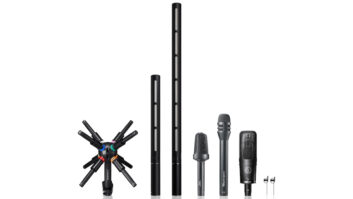An overhead view of what the redeveloped Pennsylvania Station complex would look like, as proposed by New York State Governor Andrew Cuomo. Photo: New York State Governor’s Office
New York State Governor Cuomo has announced a plan to redevelop New York City’s abysmal Pennsylvania Station, the most heavily used and arguably ugliest train station in North America. While this would be a boon for the 650,000 people who pass through its doors each day—more than three times what the station was designed for—the proposed $3 Billion effort would also have a direct effect on the concert and event production business in the city.

When Penn Station was initially built more than 100 years ago, it was a beautiful, ornate edifice inspired by the Gare d’Orsay in Paris; that version was shortsightedly torn down in the early 1960s, however, and replaced with the current rendition—a miserable underground warren of dark tunnels and cramped walkways in various states of decay. Ever since then, proper renovation and expansion of the station has been hindered by the fact that above ground, on top of it, sit a number of office buildings and perhaps the most iconic arena in the world, Madison Square Garden—not to mention the far less iconic Theater at Madison Square Garden (AKA The Venue Formerly Known As The Felt Forum).
A period postcard of the original Pennsylvania Station. Torn down in the early 1960s, office buildings and Madison Square Garden were built atop its railway tunnels, placing the station itself underground.
Cuomo’s proposed plan would expand the station underground and also make some significant changes to MSG as well. Key among them would be a “friendly, negotiated condemnation” of The Theater at Madison Square Garden, and the closing of 33rd Street between 7th and 8th Avenues—the stretch of one-way street that has housed the production entrance and truck ramp to MSG for nearly 50 years. Taking into account all the shows that have graced the Garden in that time, it is no exaggeration to say that thousands of audio pros—whether with tours, events or TV productions—are well familiar with that 1,056-foot city block.

Replacing the Theater would be a massive entrance to Penn Station on 8th Avenue, while the removed stretch of 33rd Street would become a pedestrian plaza with ground-based skylights that would allow natural light into the station below.

The 8th Avenue side of Madison Square Garden currently provides the entrance to The Theater at MSG. Photo: Google Maps
An artist’s rendering of the redeveloped space following the removal of the Theater to create a new entrance to Penn Station. Photo: NYS Governor’s Office

Losing The Theater might not be that much of a loss. Sandwiched between the Garden and Penn Station, it’s an awkward room with a 20-foot-high ceiling at the stage and raked seating on one level for 5,600 people. While a skilled audio team can make it sing, it doesn’t have a reputation as a classic room.
Still, the New York concert scene would be hurt by the demise of another mid-sized venue, particularly so soon after the demolition of the Roseland Ballroom (3,500 capacity) in 2014 to make way for condos. Of course, The Theater’s removal would only shunt more business to the remaining comparably sized concert venues in Manhattan, but very few have the capacity of The Theater. Most are in the 2,000-3,000-seat range, like the nearby Hammerstein Ballroom (2,500 seats); Times Square’s PlayStation Theater (2,100 seats); Terminal 5 (3,000 capacity); and the Beacon Theatre (2,900 seats). There is still Radio City Music Hall (6,000 seats), but that also houses theatrical shows like the annual Radio City Christmas Spectacular that take over the venue for months at a time.
The 33rd Street side of Madison Square Garden currently leads to the venue’s production ramp and employee entrance. Photo: Google Maps

An artist’s rendering of the space as a pedestrian plaza, following redevelopment. Photo: NYS Governor’s Office

As for closing off 33rd Street between 7th and 8th Avenues, that will directly affect productions going in and out of Madison Square Garden. Currently, the area is a make-due hodgepodge of trailers and fencing that surround the truck ramp leading up into MSG’s unloading area aside the arena floor; it has never had a proper truck dock. Outside, there’s little room for tours’ buses and trucks, and much of the remaining free space is taken up by TV production trucks and considerable security measures—this is, after all, a famous arena above a crucial station in the city that endured 9/11.
The wholesale removal of The Theater at MSG and that stretch of 33rd Street would provide an opportunity to rethink the production entrance to the high-profile venue, bringing it more inline with the modern production process. However, whether that happens, and indeed, whether Cuomo’s plan gets off the ground at all, remain to be seen.







